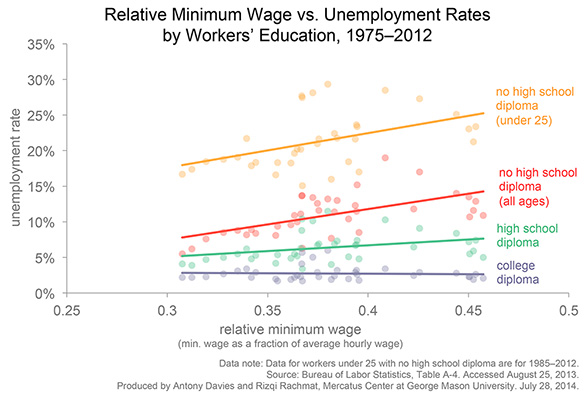When Walker saw Slate’s non-review of Gosnell, his response was admirably succinct:
Oh, is Slate Slating again?
Me being me, I went on a smidge longer, and Monica asked me to turn my comments into a post. So, here they are.
Ruth Graham’s hit piece is so by-the-numbers that it serves as a great template for how to dodge an accusation that you really, really don’t want to address head-on. For that reason, even though fisking[ref]That’s the name for the type of post where you quote a piece at length and then rebut it.[/ref] is usually not my thing, I couldn’t resist in this case. Let’s get started.
Step 1: Be vaguely dismissive
That’s even more impressive considering what the movie is: a gory legal thriller about abortion.
Most readers aren’t going to get past the first paragraph (if they even get past the headline), so you’ve got to lead with something that will effectively change the subject. Characterizing the film as a “gory…thriller” is a masterstroke. It fictionalizes the very real horror of Gosnell’s crimes, putting the film in the genre with the Saw franchise instead of real-crime, where it belongs.
Step 2: Seize the moral high ground
It’s true that many media outlets ignored the Gosnell story for too long. And it’s also true that some of the obstacles Gosnell has faced are plausibly evidence of institutional discomfort with the film’s subject matter.
For the rare readers that make it this far, it’s time to switch to defense in depth. That requires occupying the high ground by giving the appearance of a reasonable concession. The appearance alone is enough to make you seem fair-minded and reasonable, but you don’t want to actually concede anything. This means you can either pick a few innocuous, specific aspects of the accusation or some benign generalities and then make a show of conceding them.
Then, having planted your flag on Mount Moral Superiority, you can then proceed with the rest of the piece as though nothing had happened. You can keep this up even if some of your subsequent points contradict–or at least directly relate to–the faux concession that you led with.
Step 3. FUD as far as the eye can see
In August, he said, executive producer John Sullivan inquired about purchasing a sponsorship spot on Fresh Air. An NPR representative told him he would have to edit the ad copy to call Gosnell simply a “doctor,” rather than an “abortionist” or an “abortion doctor.” But NPR’s own reporters had used the phrase abortion doctor in straight news stories, including stories about Gosnell. Gosnell’s producers ended up pulling the ad. (NPR told the Daily Beast, which reported the claim in September, that “Sponsor credits that run on NPR are required to be value neutral to comply with FCC requirements and to avoid suggesting bias in NPR’s journalism.”)
The more valid the accusation, the harder it is to rebut specifically. So don’t try. Just fall back on good, old-fashioned FUD: fear, uncertainty, and denial. FUD isn’t a rebuttal, which is a based on providing contradictory information, but rather a “disinformation strategy…to influence perception by disseminating negative and dubious or false information.” [ref]Wikipedia, emphasis added[/ref]
In other words, don’t contradict the accusation directly. Just throw up a bunch of stuff that kind-of, sort-of seems to contradict the accusation but really just trail off into suggestive innuendo.
Did NPR request changes to the copy that would have contradicted their own journalistic standards? That’s the important question, and we’re left with the impression that it was addressed… but it wasn’t.[ref]Not only did Graham not press NPR on the point, she didn’t even ask them. She copy-pasted Buzzfeed’s softball question and called that good enough. This is journalism today, I guess.[/ref]
When they struggled to find a distributor, they called it a “media coverup.”
Well… was it? This is what I mean about the fake concession. Graham stated right at the outset that “many media outlets ignored the Gosnell story for too long” and that there is “evidence of institutional discomfort”. Yet here were are, at the very heart of the issue, and those earlier statements have disappeared down the memory hole. Now we’re putting “media coverup” in scare-quotes as though it were some wild-eyed conspiracy theory.
When some theaters dropped the film in its second weekend—not an unusual occurrence—they suggested it was ideologically driven “suppression.”
Is it an unusual occurrence for films that have cracked the top 10 box office to get dropped? Did “some” theaters drop Gosnell, or was it more widespread? All the quantitative information–information that movie reviewer should have at hand–is conspicuously absent here and what we’re left with is one of the most dishonest sections in the entire article.
Step 4. Attack the accuser
This is what we’ve been building up to. In an honest article–one where you actually tackle the accusations head-on–this is just an afterthought. Maybe you get around to supplying an alternative theory and maybe you don’t. It doesn’t really matter, because you’ve already dealth with the accusaion itself. Going after the accuser is optional.
But in a dishonest article like this one, you haven’t really dealt with the accusation at all. And so attacking the accuser isn’t optional, it’s mandatory. In fact, it’s the whole point. Everything else–the moral high ground, the FUD–just lays the groundwork for the real payoff: an ad hominem response.
In 2015, he staged a drama in Los Angeles based on grand jury testimony from the shooting death of Michael Brown in Ferguson, Missouri, that suggested the shooting was justified. When some actors in the show requested changes, and others quit, McAleer claimed censorship and requested more donations on his crowdfunding page. When your audience thrives on stories of its own oppression, it’s easy to turn stumbling blocks into stairs.
See? The Gosnell film and all the controversy around it are just a plot to milk an unwarranted martyr-complex for fun and profit. Also: racism. This is an article about conservatives in Slate, after all. We had to get that in there somehow. It’s in their journalistic policies handbook.
Let me wrap up by getting more specific about the “accusation” that pro-choice folks, like Ruth Graham[ref]No, I didn’t look it up. I don’t have to. When you assume a journalist is pro-choice, the odds are always in you favor.[/ref], want to make go away.
You see, the entire Kermit Gosnell situation is basically a worst-case scenario for pro-choice Americans, because it exposes and then explodes basically all of the myths that the American abortion industry is built on top of.
For starters, there’s the humanity of unborn human beings. The pro-choice lobby likes to focus on the early stages of conception because the issues seems ambiguous and they can get away with “clump of cells”-style rhetoric. Gosnell’s penchant for performing “abortions” by delivering live, late-term fetuses and then severing their spinal cords with scissors makes it just how obvious how arbitrary and capricious the whole born/not-born distinction is while simultaneously underscoring the basic humanity of all human beings, even the unborn.
Then there’s the uncomfortable fact of late-term, elective abortions happening in the United States. Folks like Ruth Graham–liberal journalists who have never had to leave the comfort of their warm, cozy liberal womb echo-chamber–like to look to Europe as a breacon of sane, common-sensen social liberalism. And yet, America’s abortion laws are dramatically out of step with Europe’s. As an example, consider abortion in France:
Abortion in France is legal on demand up to 12 weeks after conception… Abortions at later stages of pregnancy are allowed if two physicians certify that the abortion will be done to prevent grave permanent injury to the physical or mental health of the pregnant woman; a risk to the life of the pregnant woman; or that the child will suffer from a particularly severe illness recognized as incurable.[ref]Wikipedia[/ref]
A law like this, one that is typical for “liberal” Europe could never be enacted in the United States. Not without overturning Roe v. Wade. The fact that Gosnell could routinely perform late-term, elective “abortions” without running afoul of American laws underscores how extreme the American abortion regime really is. Only a handful of countries in the world have laws that allow abortion as broadly as ours do. Protecting Roe v. Wade isn’t about protecting common-sense, basic feminism. It’s about protecting a radical policy that is wholly out-of-step with the rest of the developed world.
Then there’s the fact that Gosnell operated a filthy shop of horrors while pocketing millions of dollars from his (often poor, desperate) “patients” underscores another major pro-life argument: legal, elective abortions aren’t a way of empowering women; they are a means of victimizing and subjugating them. Pro-choice activists will tell you that legal abortions are safe abortions, but the fact is that Gosnell operated entirely without any competent medical oversight whatosever because any scrutiny could be seen as violating the pro-choice ethos of protecting abortion at all costs, including costs to women’s lives.
For all the talk about abortion empowering women, it is in fact a part of a systematic transfer of all the burden and costs of casual sex onto the shoulders of women without even the compensation of having those frightful costs acknowledged. In the US, we expect women to be sexually available for men no matter what it costs them, and the same people who prop up this misogynistic exploitation want to lecture us about “rape culture.” Rape culture didn’t aid and abett Kermit Gosnell, pro-choice culture did.
And look, if that seems a little too extreme for you[ref]For the record, I wasn’t being provocative for the sake of provocation. That is what I actually believe pro-choice culture does to our society.[/ref], the final fact that Gosnell killed some of his patients (the adult ones) makes it really hard to perpetuate the myth that legal abortions are safe abortions.
These are the accusations that the Kermit Gosnell episode raise. And these are the reasons that pro-choice Americans desperately, fervently want the entire thing to go away. They emphatically don’t want to talk about a major, successful, independent film that draws heavily from transcripts of the court case to bring these issues front and center. So, this is what you do instead. You write a dissembling, dishonest non-review following this playbook and somewhere along the way you manage to change the topic from, “These guys accuse us of bias for sweeping this under the rug” to “These guys are racist profiteers.” Does that answer any of the questions raised by Gosnell or the secondary questions raised by the refusal of the media to cover Gosnell? No, it does not.
It was never supposed to.










